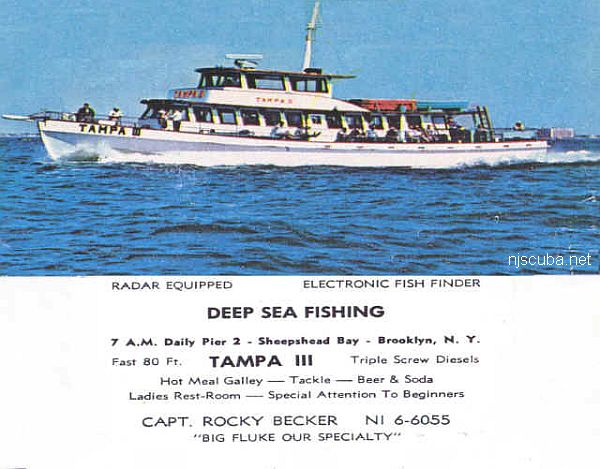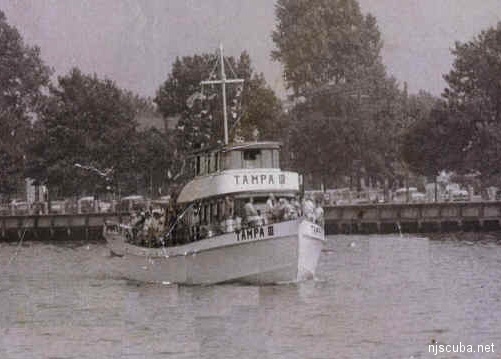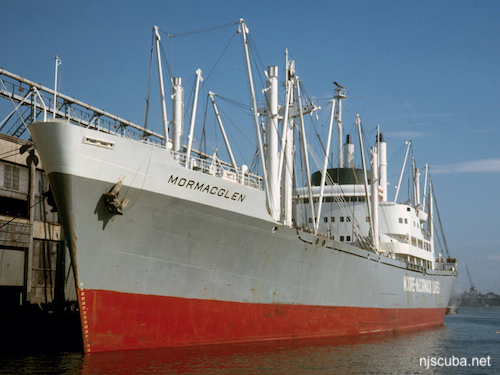Tampa III

- Type:
- shipwreck, party boat, USA
- Built:
- 1960, USA
- Specs:
- ( 72 x 20 ft ) 90 gross tons
- Sunk:
- Saturday July 4, 1970
collision in fog with freighter Mormacglen (12,700 DWT), 1 casualty - GPS:
- 40°28.093' -73°53.578' (AWOIS 1986)
- Depth:
- 50 ft

Apart from possibly the three diesel engine blocks, it is likely nothing remains of the wreck of the Tampa III. Tampa III was the third of a series of Tampas; Tampa V still sails local waters as the Miss Belmar Princess, while Tampa VII sails out of Point Pleasant.
from AWOIS: 1623
H10224/86 -- OPR-C121-WH-86; AN OBSTRUCTION WITH DEPTHS OF 46 AND 47 FT IN PRESENT SURVEY DEPTHS OF 51-53 FT WAS FOUND 138M SE OF THE AWOIS POSITION; DEBRIS ALSO FOUND IN SAME AREA; BELIEVED TO BE REMAINS OF WRECK; EVALUATOR RECOMMENDED DELETING CHARTED SYMBOL AND TYPE AND ADDING 46 OBSTN AS SHOWN ON PRESENT SURVEY. (UPDATED MSD 4/91)


Questions or Inquiries?
Just want to say Hello? Sign the .